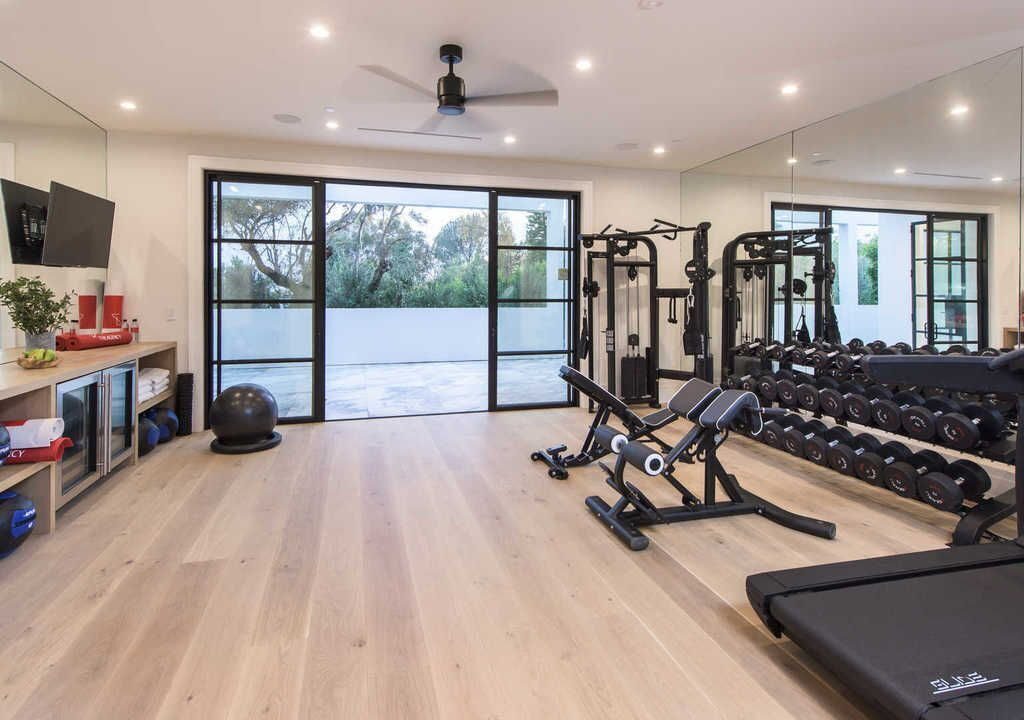
Creating a Home Gym on a Budget is a fantastic way to prioritize health and fitness without breaking the bank or dealing with the inconvenience of a traditional gym membership. With careful planning and smart investments, you can set up a home gym that meets your fitness needs, fits your budget, and transforms your fitness journey. In this comprehensive guide, we’ll explore the steps, equipment options, and tips to create your ideal budget home gym. Let’s dive in!
1. Why Set Up a Home Gym?
Benefits of a Home Gym
Before we dive into how to create a budget-friendly home gym, let’s take a moment to understand why having a home gym is beneficial:
- Cost Efficiency: You eliminate the need for a monthly gym membership, which can add up significantly over time.
- Convenience: A home gym eliminates the time spent commuting to a gym, giving you more time to focus on working out.
- Personalized Environment: Customize your gym according to your preferences and choose equipment that suits your workout style.
- Flexibility: You can exercise whenever you want, making it easier to maintain consistency in your fitness routine.
Considerations Before Setting Up Your Home Gym
To build an effective home gym, start by assessing your space, budget, and fitness goals. Here’s what you should keep in mind:
- Space Availability: Determine where you’ll set up your home gym. It could be in a spare room, garage, basement, or even a corner of your living room. The amount of space you have will influence the type and size of equipment you can purchase.
- Budget Constraints: Establish a budget for your home gym. The costs can vary widely depending on the equipment and setup, but with strategic purchases, you can keep it affordable.
- Fitness Goals: What are your primary fitness goals? Are you focusing on cardio, strength training, flexibility, or a combination of all three? Your goals will dictate the equipment you prioritize.
- Workout Preferences: Consider the types of workouts you enjoy. If you love yoga, a high-quality mat and blocks may be more valuable than a set of dumbbells. If weightlifting is your passion, free weights should be a priority.
2. Planning Your Budget Home Gym
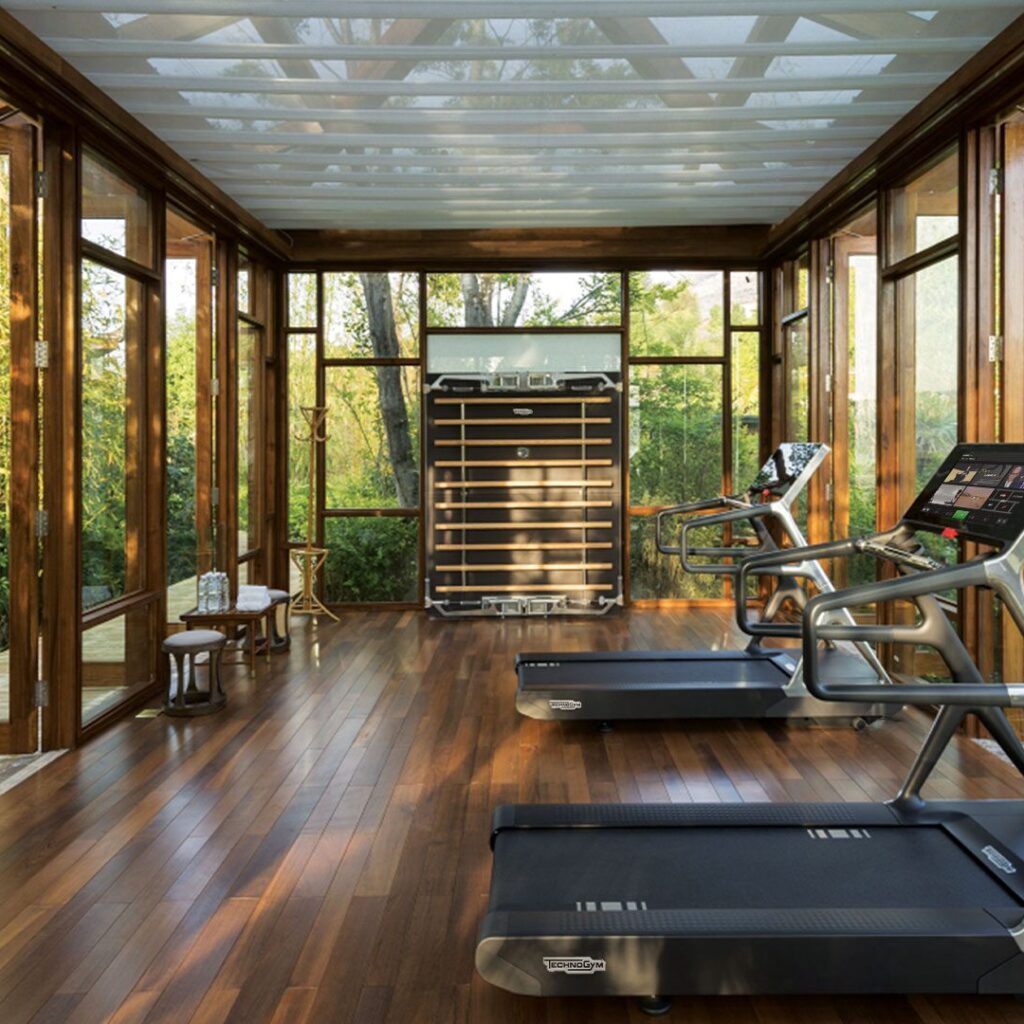
Step 1: Define Your Budget
Establish a clear budget before you start purchasing equipment. Consider starting small and adding equipment over time as your budget allows. This approach helps prevent overspending and ensures you get the most crucial items first.
Step 2: Choose a Suitable Space
Identify a space that will serve as your home gym. It doesn’t have to be large— even a small 5×5 area can be effective. Here’s what to consider:
- Flooring: Use rubber mats or foam tiles to protect your floor and provide cushioning. This is especially important if you’ll be lifting weights or performing high-impact exercises.
- Ventilation: Ensure the space is well-ventilated and has adequate lighting. You want a comfortable environment that’s conducive to working out.
- Storage Solutions: If space is limited, consider equipment that can be easily stored away or mounted, such as wall hooks for resistance bands or a compact weight rack.
Step 3: Prioritize Equipment Based on Fitness Goals
Your equipment choices should align with your fitness goals:
- Cardio Equipment: Jump rope, exercise bike, or treadmill.
- Strength Training Equipment: Dumbbells, resistance bands, or a barbell set.
- Flexibility & Mobility: Yoga mat, foam roller, or balance ball.
- Combination Equipment: Kettlebells, medicine balls, or sandbags.
3. Essential Equipment for a Budget Home Gym
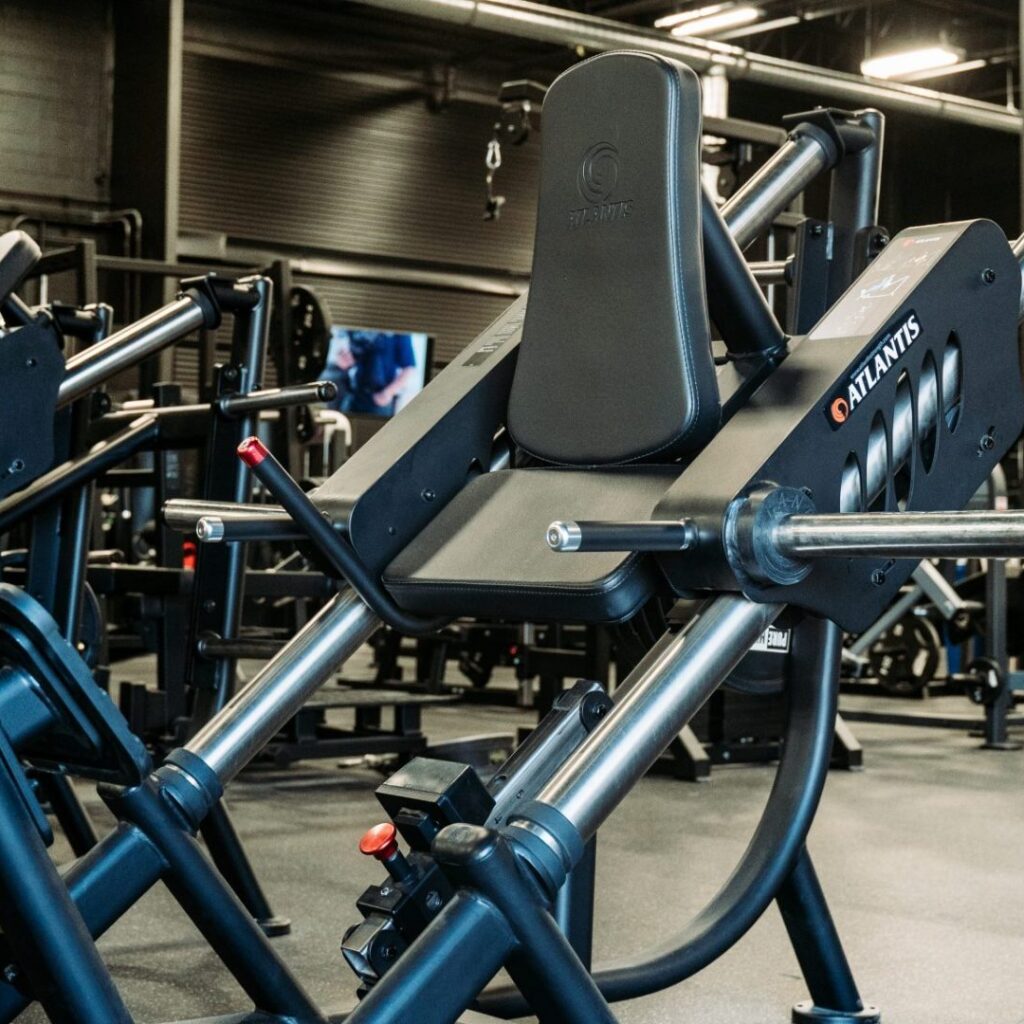
1. Resistance Bands

Resistance bands are versatile, space-efficient, and affordable. They’re great for strength training, flexibility, and rehabilitation exercises. You can perform a wide range of exercises targeting different muscle groups with resistance bands, such as bicep curls, squats, and shoulder presses. Look for a set that includes varying levels of resistance to accommodate different exercises and fitness levels.
Estimated Cost: $10 – $30
2. Dumbbells or Adjustable Weights

Dumbbells are ideal for strength training, adding resistance to traditional bodyweight exercises, and providing versatility. If you’re on a tight budget or have limited space, consider adjustable dumbbells, which allow you to change the weight settings with ease. They’re a compact alternative to a full set of individual dumbbells.
Estimated Cost: $50 – $150 (adjustable sets can be higher)
3. Yoga Mat

A good-quality yoga mat is essential, not just for yoga but for any floor exercises, stretching, or core work. Choose a mat with adequate thickness and grip to ensure comfort and safety.
Estimated Cost: $20 – $50
4. Jump Rope
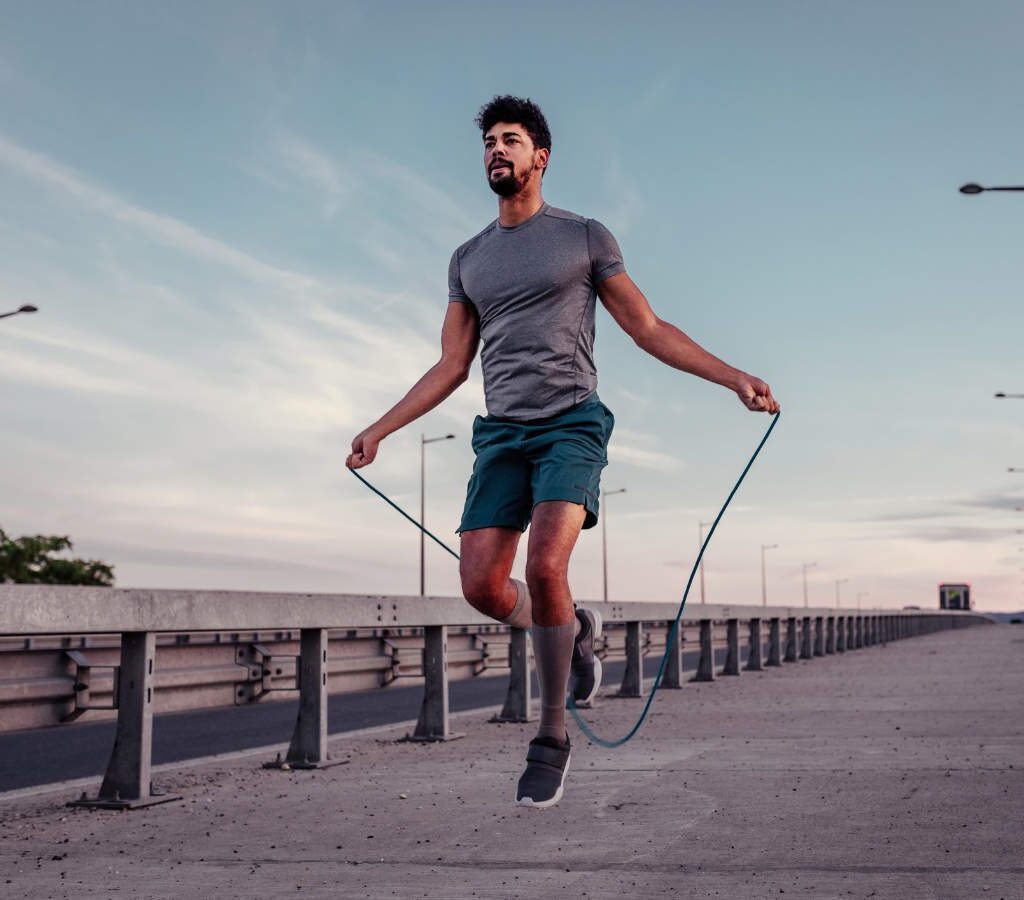
Jump ropes are perfect for cardio and agility training. They take up minimal space, are cost-effective, and can be used both indoors and outdoors. Plus, jumping rope is an excellent way to improve coordination and cardiovascular fitness.
Estimated Cost: $10 – $20
5. Kettlebells
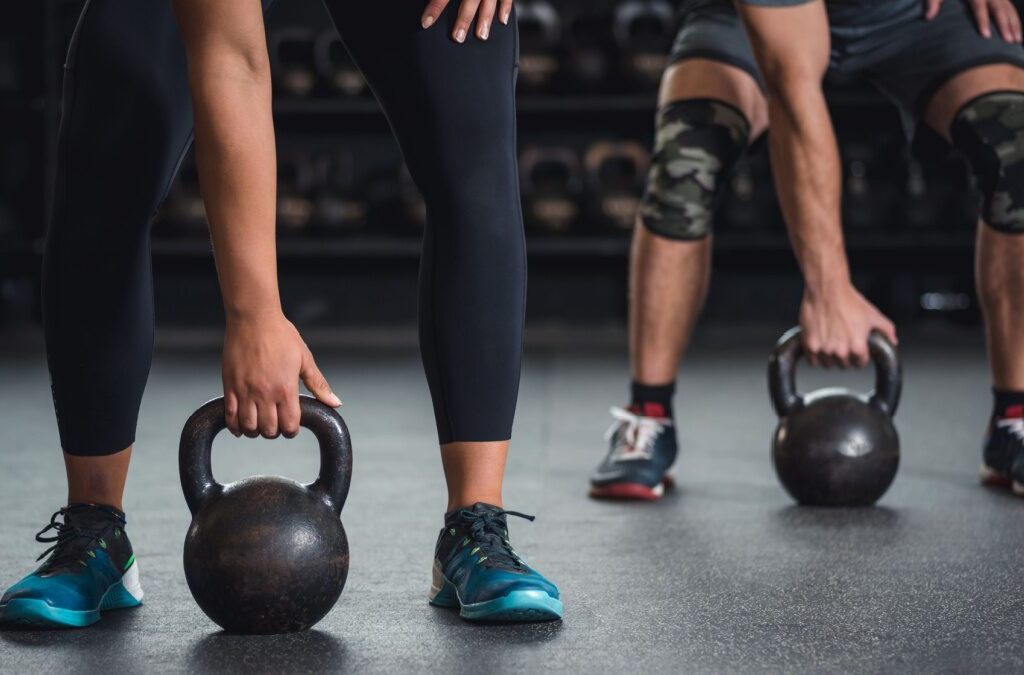
Kettlebells are fantastic for functional training, which engages multiple muscle groups at once. They can be used for exercises like swings, deadlifts, and presses. Start with a weight that’s challenging but allows you to maintain proper form.
Estimated Cost: $20 – $50 per kettlebell
6. Pull-Up Bar
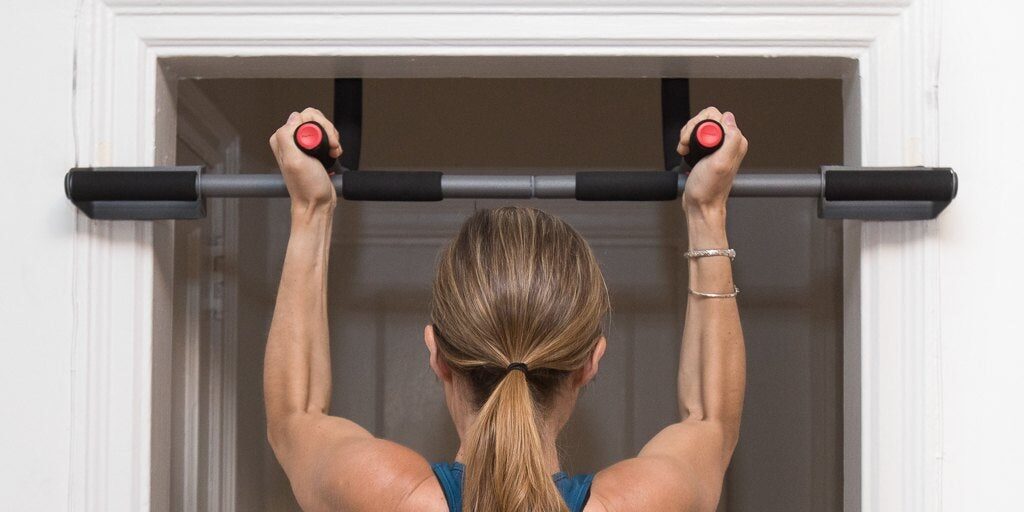
A pull-up bar can be mounted in a doorway and is perfect for upper body and core training. Pull-ups, chin-ups, and hanging leg raises are effective bodyweight exercises that can be performed with this simple piece of equipment.
Estimated Cost: $20 – $40
7. Stability Ball

Stability balls are excellent for core strengthening exercises, balance training, and as an alternative to a traditional bench for certain exercises. You can use it for exercises like wall squats, planks, and seated overhead presses.
Estimated Cost: $15 – $30
8. Barbell and Weight Plates

If you have space and a slightly larger budget, investing in a barbell and weight plates can elevate your home gym. This setup is ideal for compound exercises like squats, deadlifts, and bench presses. Opt for a weight set that includes a range of plates, so you can adjust the resistance as needed.
Estimated Cost: $150 – $300
4. Additional Equipment and Accessories
1. Bench

A workout bench adds versatility to your home gym, allowing for exercises like bench presses, step-ups, and seated presses. Look for an adjustable bench that can incline and decline for added functionality.
Estimated Cost: $50 – $150
2. Medicine Ball

Medicine balls are great for core work, power training, and functional movements. They come in various weights, and you can use them for exercises like Russian twists, wall balls, and ball slams.
Estimated Cost: $20 – $50
3. Foam Roller

A foam roller is a great tool for self-myofascial release and muscle recovery. It helps alleviate muscle soreness, improve flexibility, and prevent injuries. Use it after your workout sessions to massage tight muscles and enhance recovery.
Estimated Cost: $10 – $30
4. Suspension Trainer

A suspension trainer, such as TRX, utilizes bodyweight exercises to build strength, balance, and flexibility. It can be anchored to a door or mounted securely to a wall. Suspension trainers are great for both beginners and advanced fitness enthusiasts, as you can easily adjust the intensity of the exercises.
Estimated Cost: $50 – $100
5. Creating a Workout Plan for Your Home Gym
Designing Your Workout Routine
Your workout routine should be structured around your fitness goals. Here’s a general approach you can adapt:
- Warm-Up: Start with 5-10 minutes of light cardio (jumping rope, jogging in place) and dynamic stretches to prepare your body for exercise.
- Strength Training: Alternate between upper body, lower body, and core exercises. Include compound movements (e.g., squats, deadlifts, bench presses) and isolation exercises (e.g., bicep curls, tricep extensions).
- Cardio: Incorporate cardio exercises like jump rope, running in place, or high-intensity interval training (HIIT).
- Cool-Down: End with 5-10 minutes of static stretching and foam rolling to relax muscles and improve flexibility.
Suggested Weekly Routine
| Day | Focus Area | Equipment/Exercises |
|---|---|---|
| 1 | Upper Body Strength | Dumbbells (presses, rows), Pull-Up Bar, Resistance Bands |
| 2 | Cardio + Core | Jump Rope, Stability Ball (planks), Medicine Ball |
| 3 | Lower Body Strength | Kettlebells (swings, goblet squats), Resistance Bands |
| 4 | Rest or Active Rest | Yoga, light stretching, or foam rolling |
| 5 | Total Body Strength | Barbell (deadlifts, presses), Suspension Trainer |
| 6 | Cardio + Mobility | Jump Rope, Yoga Mat (dynamic stretches), Core Work |
| 7 | Rest | Recovery and Relaxation |
6. Tips for Maximizing Your Budget
1. Prioritize Multipurpose Equipment
Choose equipment that serves multiple functions. For example, kettlebells can be used for cardio
, strength training, and functional exercises. Similarly, resistance bands are great for strength training, stretching, and rehabilitation exercises.
2. Consider Second-Hand or Discounted Equipment
Check online marketplaces like Craigslist, Facebook Marketplace, and eBay for second-hand equipment. You can often find high-quality items at a fraction of the cost. Also, look for sales or discounts at fitness stores, especially during holiday seasons.
3. Start Small and Expand Gradually
Don’t feel the need to buy everything at once. Start with a few essential items that cover your basic workout needs. As you become more consistent and your budget allows, expand your collection with additional equipment.
4. Utilize Bodyweight Exercises
Bodyweight exercises like push-ups, squats, lunges, and planks require no equipment but are highly effective for building strength and endurance. Focus on mastering these movements before adding weights.
5. DIY Solutions for Certain Equipment
You can create your own equipment for some exercises. For example, make your own sandbag for weight training using a duffel bag and sand or create a plyometric box from sturdy wood.
7. Organizing and Maintaining Your Home Gym
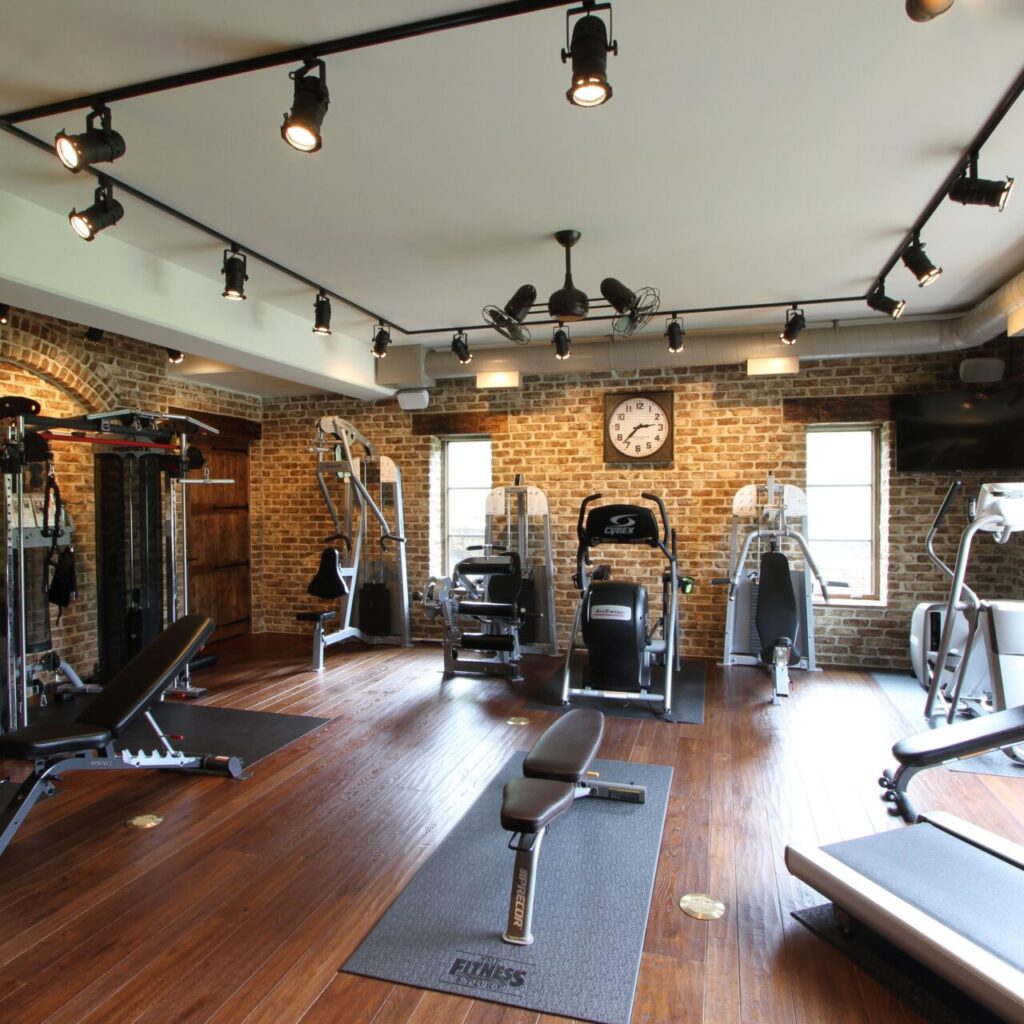
1. Storage Solutions
Keep your home gym tidy and organized to maximize space and ensure safety. Consider installing wall hooks for resistance bands and jump ropes, using a shelf or rack for weights, and a storage bin for smaller accessories.
2. Cleaning and Maintenance
Regularly clean your equipment to prevent the buildup of sweat and bacteria. Wipe down mats, dumbbells, and benches with disinfectant after each use. For heavier equipment, periodically check for wear and tear.
3. Create a Motivating Environment
Design your home gym to be a motivating and enjoyable space. Add posters, a whiteboard for tracking workouts, or a speaker for your workout playlist. Lighting and ventilation are also key to creating an energizing environment.
8. Final Thoughts on Building a Budget Home Gym
Creating a budget home gym is an investment in your health and well-being. With thoughtful planning, you can build a space that’s tailored to your fitness needs and goals without overspending. Start by prioritizing essential equipment, make strategic purchases, and gradually build up your collection as your budget and needs evolve.
Remember, consistency is key. Regardless of the equipment you have, the effort you put into your workouts will determine your success. Set clear goals, stay motivated, and make your home gym a place where you want to work out and achieve your fitness aspirations.
Happy training!
Frequently Asked Questions
1. What equipment should I prioritize for a budget home gym?
Start with versatile items like resistance bands, a pair of dumbbells, a yoga mat, and a jump rope. These basics cover strength, cardio, and flexibility without taking up much space or costing too much.
2. How much space do I need for a home gym?
A small space of 5×5 feet is enough for a basic setup. You can perform most exercises with just a mat, dumbbells, and resistance bands. For larger equipment like a weight bench or treadmill, aim for 8×8 feet or more.
3. How do I build a budget home gym without overspending?
Start small by purchasing essential items. Look for second-hand equipment or wait for sales. Opt for multi-purpose items like adjustable dumbbells or kettlebells, and consider DIY options like homemade sandbags.
4. Can I get a full-body workout with minimal equipment?
Yes! Focus on bodyweight exercises (e.g., squats, lunges), and use resistance bands or dumbbells for additional resistance. You can work all major muscle groups and incorporate cardio with a jump rope.
5. How do I maintain and store my home gym equipment?
Clean equipment after each use, inspect for wear and tear, and store items neatly using wall hooks or shelves. Use mats to protect your floor, and keep your space organized for safety and convenience.

